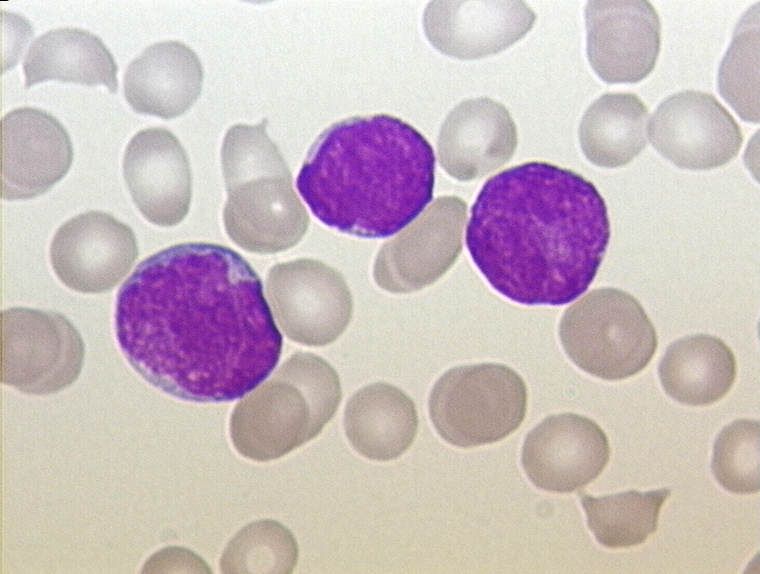Continuous PEGasparaginase Prevents Antibody Formation in Pediatric ALL
Administering pegylated asparaginase continuously to pediatric patients with acute lymphoblastic leukemia appears to be safe without compromising the efficacy of treatment.
“We conclude that a continuous dosing schedule of PEGasp significantly reduces the inactivating hypersensitivity rate and antibody formation compared with a noncontinuous schedule,” according to the study authors.

Treatment with pegylated asparaginase (PEGasp; Oncaspar) as part of a continuous dosing schedule demonstrated efficacy in preventing antibodies from forming while mitigating hypersensitivity reactions in pediatric patients with acute lymphoblastic leukemia (ALL), according to findings from the Dutch Childhood Oncology Group-ALL11 study (2012-000067-25) published in Journal of Clinical Oncology.
Investigators reported hypersensitivity reactions in 3.3% of patients during induction therapy. Additionally, hypersensitivity reactions were reported in 2.6% of patients who received continuous PEGasp compared with 10.8% of those who were treated with noncontinuous PEGasp (P <.01). Inactivating hypersensitivity reactions occurred in 1.3% and 8.3% of patients in each respective arm (P <.01). Those who received continuous PEGasp had a significantly lower likelihood of experiencing an inactivating hypersensitivity reaction (OR, 0.15; 95% CI, 0.032-0.653).
Total antibody levels appeared to be lower among patients who received continuous PEGasp (P <.01), where antibody levels increased by 1.1-fold compared with 2.5-fold in the noncontinuous treatment arm. Patients in the continuous PEGasp arm had significantly lower anti-PEG antibodies (P <.0001), although there were no significant differences in anti–E. coli antibody levels between the treatment arms.
“We conclude that a continuous dosing schedule of PEGasp significantly reduces the inactivating hypersensitivity rate and antibody formation compared with a noncontinuous schedule,” lead study author Inge M. van der Sluis, MD, PhD, of Princess Máxima Center for Pediatric Oncology, in Utrecht, the Netherlands, and coinvestigators wrote. “The continuous schedule of asparaginase treatment did not lead to more toxicity but changed the timing of toxicity. Finally, the continuous schedule did not change the efficacy of the therapy.”
In this study of 818 pediatric patients with newly diagnosed ALL, 312 patients with medium-risk disease were randomly assigned to receive 14 individualized doses of PEGasp once every 2 weeks as part of a continuous (n = 155) or noncontinuous schedule (n = 157). All patients received 3 doses of PEGasp at 1500 IU/m2 intravenously once every 2 weeks as induction therapy.
The study’s primary end point was hypersensitivity incidence. Other end points included antibody levels and nonallergic asparaginase-related adverse effects (AEs). Efficacy outcomes included cumulative incidence of relapse (CIR), cumulative incidence of death (CID) in first remission (CR1), and disease-free survival (DFS).
Investigators reported that baseline characteristics were similar between both treatment arms. Additionally, median PEGasp activity levels within the target range were achieved following the ninth dose in the continuous treatment arm and the tenth dose in the noncontinuous treatment arm.
With an estimated median follow-up of 57.2 months (95% CI, 51.9-61.3), the 5-year CIR rate was 4.0% (SE, 1.8%) for patients who received noncontinuous PEGasp compared with 5.6% (SE, 2.1%) among those who received continuous treatment. Additionally, the rate of CID in CR1 at 5 years was 0.6% (SE, 0.6%) vs 1.9% (SE, 1.1%) in each respective arm, and the 5-year DFS rate was 95.3% (SE, 1.9%) vs 91.9% (SE, 2.4%).
A statistically significant lower incidence of increased serum amylase was reported in the continuous treatment arm compared with the noncontinuous arm (P <.05). During maintenance treatment for medium-risk patients, thromboembolic events were less common in the continuous arm vs the noncontinuous arm during weeks 1 to 18 (4.5% vs 7.0%) and weeks 19 to 36 (2.0% vs 8.4%). Additionally, pancreatitis occurred in 0.6% and 5.1% of patients in each respective arm from weeks 1 to 18 and in 0.0% and 1.9% between weeks 19 and 36.
Overall, 48.4% of patients who received continuous PEGasp and 57.5% of those who received noncontinuous treatment required IVIG prophylaxis. Of these patients, 4.1% and 6.2% of each respective arm had a hypersensitive reaction following prophylaxis (P = .858).
Reference
van der Sluis IM, Brigitha LJ, Fiocco M, et al. Continuous PEGasparaginase dosing reduces hypersensitivity reactions in pediatric ALL: a Dutch Childhood Oncology Group ALL11 randomized trial. J Clin Oncol. Published online February 2, 2024. doi:10.1200/JCO.23.01797